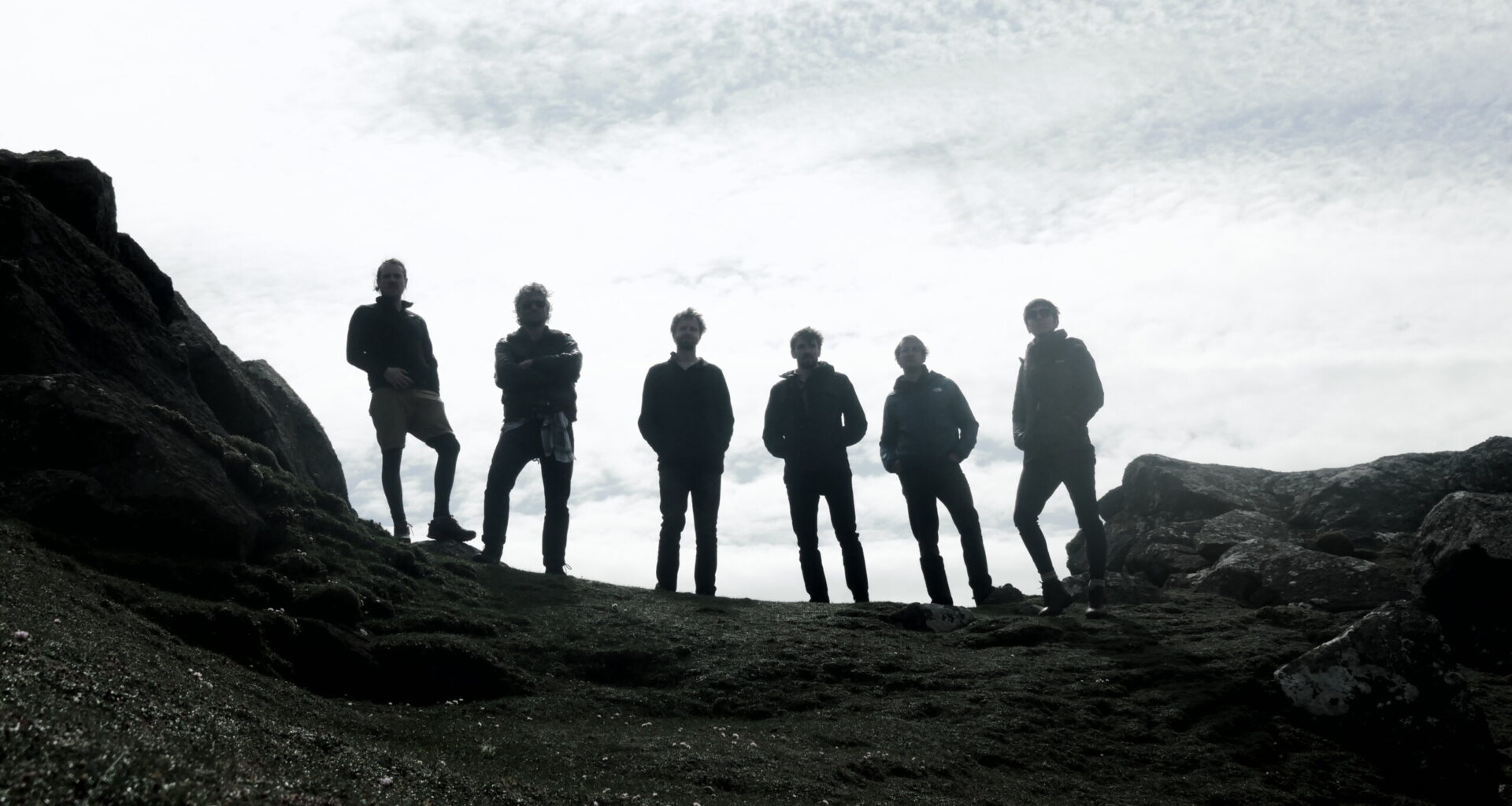Garefowl is an ensemble of musicians, including Ewan Macdonald, Chris Jones, Jess Whelligan, Nathan Bontrager, Richard O’Flynn, and Stuart Graham, who blend fiddle, viola da gamba, cello, mandolin, concertina, bouzouki, field recordings, and haunting drones derived from seabird bones to create a distinctly evocative and immersive musical experience. They perform music that draws from the traditional and inspired by the rich cultural and natural heritage of the St Kilda archipelago, located 50 miles west of the Outer Hebrides in the Atlantic Ocean.
In 1840, Lachlan Mackinnon, a relative of Ewan, was part of a group that hunted the last great auk (known as “garefowl” in St Kilda) on the isolated sea stack Stac an Armin, under the belief that it was a witch. Ewan Macdonald and his father Murdo initiated this project to reflect on their family history and to highlight the current threats to St Kilda’s avian population. The poignant narratives surrounding the extinct great auk and the displaced human inhabitants of St Kilda resonate profoundly with our contemporary uncertainties, intertwining themes of nature’s fragility and the vulnerability of human existence within the music.

Hosted by the ‘Talking Gigs’ series (the brainchild of the evening’s host, a garrulous be-kilted chap called Alistair), the evening was divided into two halves. The first half, Garefowl scarcely touched their instruments at all, but instead were interviewed live (with audience Q&A) about their origins, musicality, and upcoming plans.
Garefowl seem to range from nonplussed to actively uncomfortable under the interviewer’s spotlight, with some members mumbling and trailing off mid-sentence, clearly anxious to let their tunes do the talking. The exception is the group’s electronic component, Irish percussionist and noise-creator Richard O’Flynn, who is garrulous and outgoing, and audibly dials the energy in the room up several notches when he speaks.
Before the band begin their performance, the audience is shown a 20-minute film, made in the 1930s, all about life on St Kilda. This tiny island, the westernmost point of the Outer Hebrides, was completely evacuated in the 1930s due to its dwindling population. Likewise, in the interval, a 70s-produced Thames Television short film gave us interviews with some of those who had been taken to the mainland from the island.
This isn’t just an educational jaunt because St Kilda is fundamental to the creation, philosophy, and even the music of Garefowl. MacDonald’s ancestor came from there, and 185 years ago was responsible for the killing of the last Great Auk in the United Kingdom; this large flightless bird (known as a ‘gare fowl’ by the locals) was thought to be a witch who had raised a storm. It is this mixture of wildness, remoteness, nature – that sense of place – that informs Garefowl’s music.
Broadly speaking, Garefowl play folk music, with violin and cello (played beautifully by Jess Whelligan) augmented with harmonium, mandolin, and viol de gamba, among other things. Three of the members swap and change instruments throughout the night. What really sets Garefowl apart, though, is the addition of electronic elements. These are taken from sounds collected by the band themselves during a trip to St Kilda to record their most recent album, and include things like X-ray scans of seabird bones reprogrammed as sine waves. It’s a wonderful harking back to the principles of Musique concrète, and lends a unique element to the airs and tunes that the band plays.
Their collective and individual ability is beyond question, but if you’re looking for a traditional folk set in the second half, you’re likely going to be frustrated. These aren’t tunes that build in a standard A-B pattern or run together into sets. Instead, most of the music that makes up the set (which is their forthcoming album played in its entirety, and the titles of which weren’t announced) is played as one unbroken hour-long piece. The tunes are built up, layer upon layer, repeated and deepened, always informed or enlightened by a sampled church bell or the hydrophonic capture of waves. On three occasions, they break quite suddenly into what purists might consider a ‘proper’ tune, wonderful bursts of Scots folk, which sets every foot tapping within two bars. But even these tunes either stop suddenly, even mid-phrase, or they fade and break apart, to return to the somewhat ambient laments and drones.
Garefowl live can be likened to following behind a band as they play outdoors on the back of a moving horse cart, in a very strong wind. It’s clear that beautiful and unique things are happening, and the proximity of nature enhances these emotions, but the wind keeps blowing away the beginnings and ends of songs.
Reviewed on 15th May 2025
The Reviews Hub Score
Wonderful bursts of Scots folk
